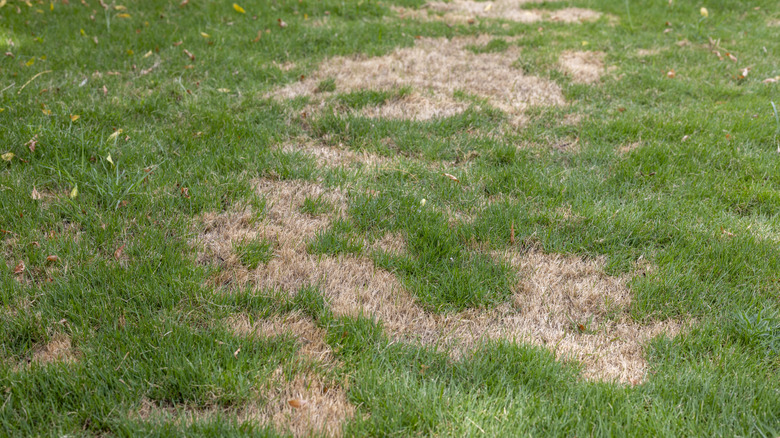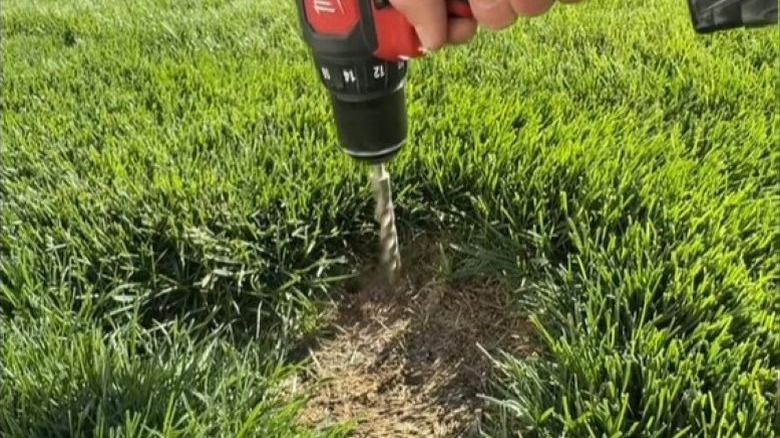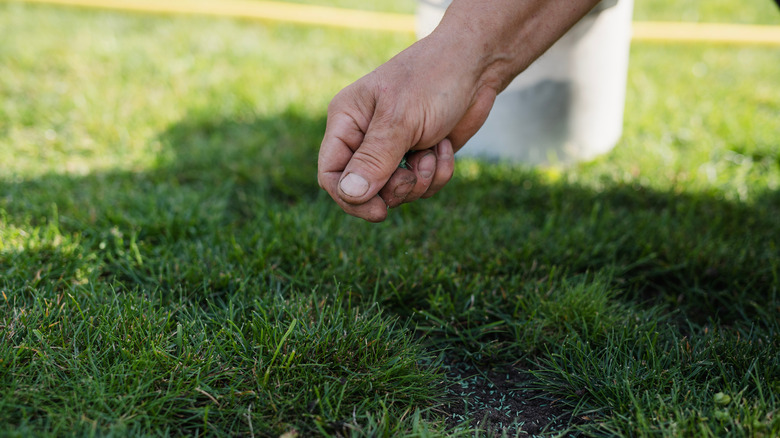Easily Aerate The Lawn With A Tool You Already Own
We may receive a commission on purchases made from links.
Is your lawn looking patchy? Soil compaction is one common reason for patches of dead grass or bald spots on a lawn. For example, if your yard gets a lot of foot traffic, this presses the soil down and makes it difficult for grass to take root. This, of course, leads to patches of failing grass. The good news is that you can aerate lawn spots that are troublesome and resolve compaction issues to eventually have beautiful, lush grass!
Lawn aeration creates numerous holes in the ground that break up compacted soil. Aerating not only allows grass to take root better, but it also creates a soil environment where air, water, and essential lawn nutrients can get deeper for better lawn growth. Core aeration is recommended for large lawns with widespread compaction issues, but if you have a small yard or just a few patchy areas of grass, you may not have to rent or buy expensive tools — a hand-held drill is the perfect solution for your struggling lawn. Let's dig into the quick, simple drill aeration method that will help your lawn get healthier and greener.
How to aerate your lawn with a drill
Before aerating your lawn, it's important to determine that soil compaction is, indeed, the cause of your patchy grass problem. Other issues, like low sunlight, inadequate nutrients, common lawn diseases, pests, and improper lawn care can also cause patchy grass. To test your trouble areas for soil compaction, simply try to press a long, pointed object — like a screwdriver — into the ground. If it doesn't easily penetrate the soil, you've got compacted soil.
Once you've determined that your soil is compacted, grab your handheld screwdriver and drill your first hole straight into the ground in the bald or patchy area of your lawn. Make sure to drill 2 to 4 inches down so that water and nutrients can get deep enough into the soil. Then, continue to make additional holes roughly 3 to 6 inches apart, which ensures enough nutrients get to the grass roots but won't damage the area too much. Once your first patchy area has been successfully aerated, move on to the next one.
Overseeding and nourishing your grass for success
When you've drilled all of your aeration holes, you should overseed the patchy areas right away, in addition to fertilizing and watering your lawn. Seeds will germinate and become established faster after aeration since the water and nutrients will soak quickly into the soil through the holes. Be sure to choose an appropriate type of grass seed for your climate — cool-season varieties for cold regions and warm-season varieties for hot regions.
Once you've overseeded, apply a layer of topdressing and then lightly water the soil before applying fertilizer to the area, following the product's instructions. Make sure you choose a starter fertilizer that contains nitrogen, potassium, and a rich amount of phosphorus. This type of fertilizer is perfect for use when you're overseeding since these nutrients — especially phosphorus — encourage grass to develop strong roots. Finally, water again and keep the aerated areas moist by watering every day until new grass is established. Be sure to keep both pets and people off of these patches of grass for about a month after aerating and overseeding. At that point, your new seeds will spring up and your grass will be growing strong!


